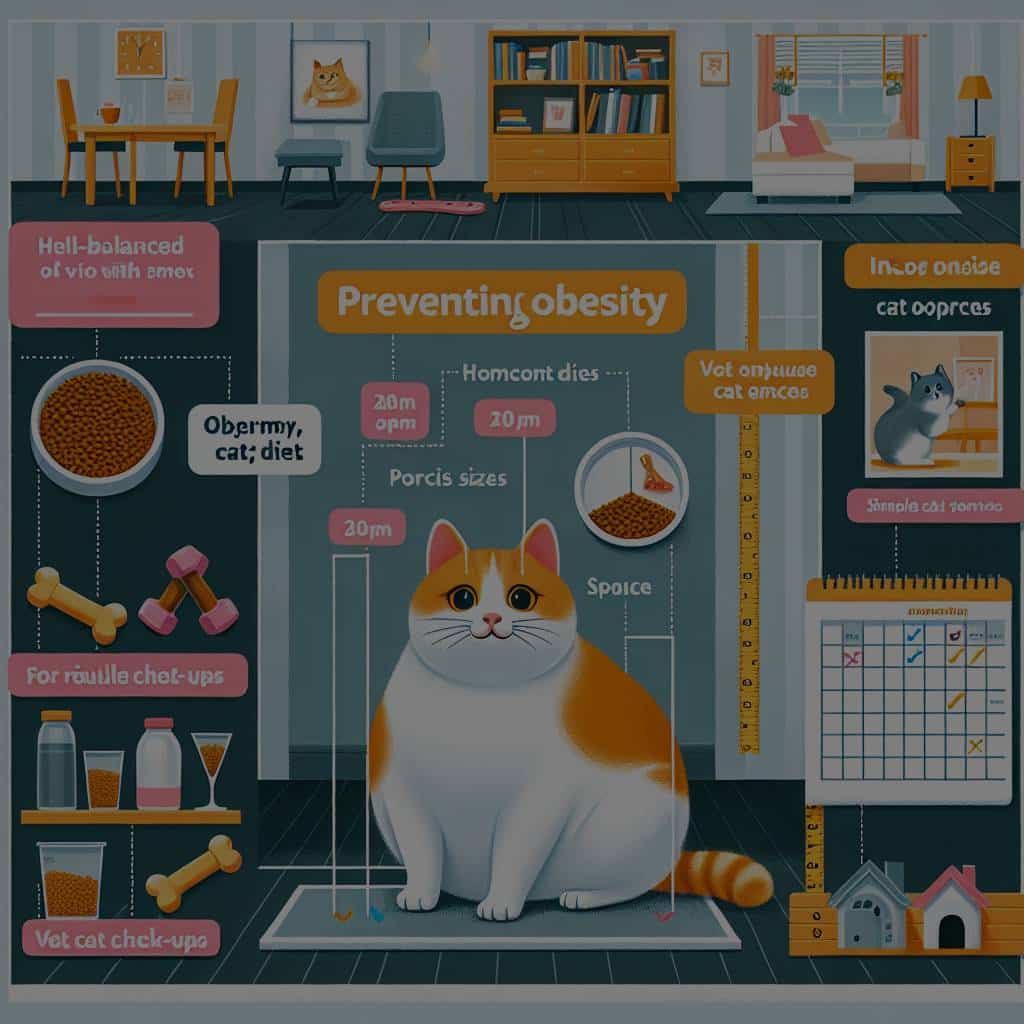What’s the Best Approach to Preventing Obesity in Indoor Cats with Limited Space?

When it comes to the health and happiness of your feline friends, the looming issue of obesity is one that cannot be overlooked. As owners of indoor cats who might not have a great deal of space to roam and play, you might find yourselves wondering: How can we prevent our cats from becoming overweight or obese? This is a question with a multiplicity of answers, encompassing everything from diet and feeding practices to physical activity and vet visits. Let’s delve into this important subject, informed by insights not only from veterinarians and pet health experts but also academic scholars and credible online resources such as Google and PubMed.
The Role of Food in Feline Obesity
One of the primary factors contributive to feline obesity is the kind of food your cat is consuming. It is essential to understand that not all cat food is created equal, and certain types can lead to weight gain more than others.
Avez-vous vu cela : How to Safely Adjust a Pet Bird’s Sleep Cycle During Daylight Saving Changes?
When examining the topic of feline obesity, an often cited work is a scholarly article published in the Journal of Feline Medicine and Surgery. This article suggests that high carbohydrate diets could lead to obesity in cats. This is because cats, being obligate carnivores, have a limited ability to metabolize carbohydrates. When they consume a diet high in carbs, the excess is stored as body fat, leading to weight gain.
A simple Google search on ‘cat food for weight loss’ yields numerous options, many of which are low in carbohydrates and high in protein, aligning with a cat’s natural diet. Moreover, PubMed houses several studies that also support the idea that a high-protein, low-carb diet can help maintain a healthy weight in cats.
Dans le meme genre : How to Choose the Right Canine Breed for Assistance with PTSD?
Feeding Frequency and Portion Control
The frequency and quantity of feeding can also significantly impact a cat’s weight. Feeding your cat smaller portions spread over the day, rather than one or two large meals, can prevent overeating and weight gain.
A recent study published on Google Scholar indicates that domestic cats that are fed several small meals a day tend to maintain a healthier weight compared to cats that are fed one large meal. This method of feeding, often referred to as "meal feeding," can help control portion sizes and prevent overeating, which is especially beneficial in a limited space where physical activity might be restricted.
Another aspect worth considering is the use of automated pet feeders, which allow you to schedule and control the portions your cat receives throughout the day. This hands-off approach can be particularly useful if you are out of the house for extended periods.
Importance of Physical Activity
Even within the confines of a smaller living space, there are still opportunities for your cat to get the exercise it needs. Regular physical activity is a crucial aspect of preventing obesity in cats and ensuring their overall health.
Incorporating playtime into your cat’s daily routine can help keep them active and engaged. Interactive toys, laser pointers, or even a simple ball of yarn can provide your cat with much-needed exercise. A cat tree or scratching post can also serve dual purposes, offering a place for your cat to play and exercise while also catering to their natural instinct to climb and scratch.
According to a study available on PubMed, even 10 to 15 minutes of play per day can significantly improve a cat’s physical health and help maintain a healthy body weight. So while space may be limited, with a bit of creativity, you can still ensure your cat gets plenty of playtime and exercise.
Regular Vet Visits and Health Check-ups
Visiting the vet regularly is another essential step in preventing obesity in your indoor cat. Regular health check-ups can help early detection of weight gain and other health issues before they become serious problems.
Your vet can provide a professional assessment of your cat’s weight and body condition and can provide recommendations on diet and exercise based on their individual needs. Moreover, they can also monitor your cat’s health and make adjustments to their care as necessary.
A Google Scholar search on ‘cat obesity and vet visits’ reveals several studies highlighting the importance of regular vet check-ups in managing and preventing obesity in cats. By maintaining regular visits to the vet, you can ensure your cat’s health is closely monitored, which is crucial for early detection and prevention of obesity.
Transitioning Your Cat to a Healthier Lifestyle
Helping your cat transition to a healthier lifestyle requires patience and commitment, but the rewards are well worth the effort. Remember, it’s not about a rapid weight loss, but about gradual changes that will lead to long-term improvements in your cat’s health.
As a first step, consider consulting with your vet to create a customized diet and exercise plan based on your cat’s unique needs and circumstances. If you’re transitioning them to a new diet, do so gradually to avoid digestive issues. Keep an eye on their weight, but remember that healthy progress can be slow and steady.
It is also important to remember that every cat is unique, and what works for one may not work for another. Therefore, it’s important to monitor how your cat reacts to diet changes and new exercise routines and be prepared to make adjustments as needed.
By putting in the time and effort, and armed with knowledge from various resources and experts, you can help your indoor cat maintain a healthy weight, even with limited space.
The Implication of Environmental Enrichment
Environmental enrichment serves as a crucial factor in curbing obesity in indoor cats. Despite having limited space, there are ways to make their environment stimulating and conducive to exercise. Through this approach, cat owners can encourage their pets to stay active rather than sedentary.
One effective way of promoting activity in cats is through offering toys that stimulate their natural hunting instincts. Interactive toys that move or make sounds can motivate your cat to hunt and play, increasing their overall activity level. Research available on Google Scholar has shown that cats that engage in play activities tend to maintain a healthier body weight.
Furthermore, providing vertical spaces such as cat towers or wall-mounted platforms can encourage climbing, a natural behavior for cats that also serves as excellent exercise. This vertical utilization of space can be especially effective in smaller homes or apartments where horizontal space is limited.
Hiding food or treats around the house, a method known as "food puzzles," can also stimulate mental and physical activity. This technique, as supported by an article on PubMed, not only aids in weight management but also reduces stress and improves the overall body condition of your cat.
The Conclusion: Combating Obesity in Indoor Cats
In conclusion, preventing obesity in indoor cats involves a multifaceted approach that focuses on diet, feeding practices, physical activity, and regular vet check-ups. Even with limited space, there are innovative ways to promote physical activity and maintain a healthy body weight in your cat.
Importantly, it’s essential to understand that your cat’s journey to a healthier lifestyle will require time and patience. Every cat is different, and what works for one might not work for another. So, be prepared to assess and adjust the strategies you use based on your cat’s unique behaviors and reactions.
Regular vet visits are crucial for monitoring your pet’s weight and overall health. Your vet can provide a comprehensive health check-up, assessing risk factors and offering professional advice about diet and exercise.
Remember that Google Scholar and PubMed are excellent resources for additional information on feline med and weight loss plans. Knowledge is power, and staying informed is key to helping your indoor cat maintain a healthy lifestyle.
Ultimately, while obesity in cats is a serious issue, it is one that can be avoided with the right approach. The best way to combat obesity in cats, particularly those living in smaller spaces, is through a combination of a healthy diet, controlled feeding practices, regular exercise, and consistent vet visits. Prioritizing these factors will not only help manage your cat’s weight but also contribute to their overall well-being and longevity.
